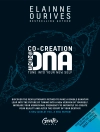This Handbook contains a set of articles introducing the modeling and simulation of materials from the standpoint of basic methods and studies. The intent is to provide a compendium that is foundational to an emerging ?eld of computational research, a new discipline that may now be called Compu- tional Materials. This area has become suf?ciently diverse that any attempt to cover all the pertinent topics would be futile. Even with a limited scope, the present undertaking has required the dedicated efforts of 13 Subject Editors to set the scope of nine chapters, solicit authors, and collect the manuscripts. The contributors were asked to target students and non-specialists as the primary audience, to provide an accessible entry into the ?eld, and to offer references for further reading. With no precedents to follow, the editors and authors were only guided by a common goal –to produce a volume that would set a standard toward de?ning the broad community and stimulating its growth. The idea of a reference work on materials modeling surfaced in conver- tions with Peter Bin?eld, then the Reference Works Editor at Kluwer Academic Publishers, in the spring of 1999. The rationale at the time already seemed quite clear – the ?eld of computational materials research was t- ing off, powerful computer capabilities were becoming increasingly available, and many sectors of the scienti?c community were getting involved in the enterprise.
表中的内容
Electronic Scale.- Atomistic Scale.- Mesoscale/Continuum Methods.- Mathematical Methods.- Rate Processes.- Crystal Defects.- Microstructure.- Fluids.- Polymers and Soft Matter.- Plenary Perspectives.












